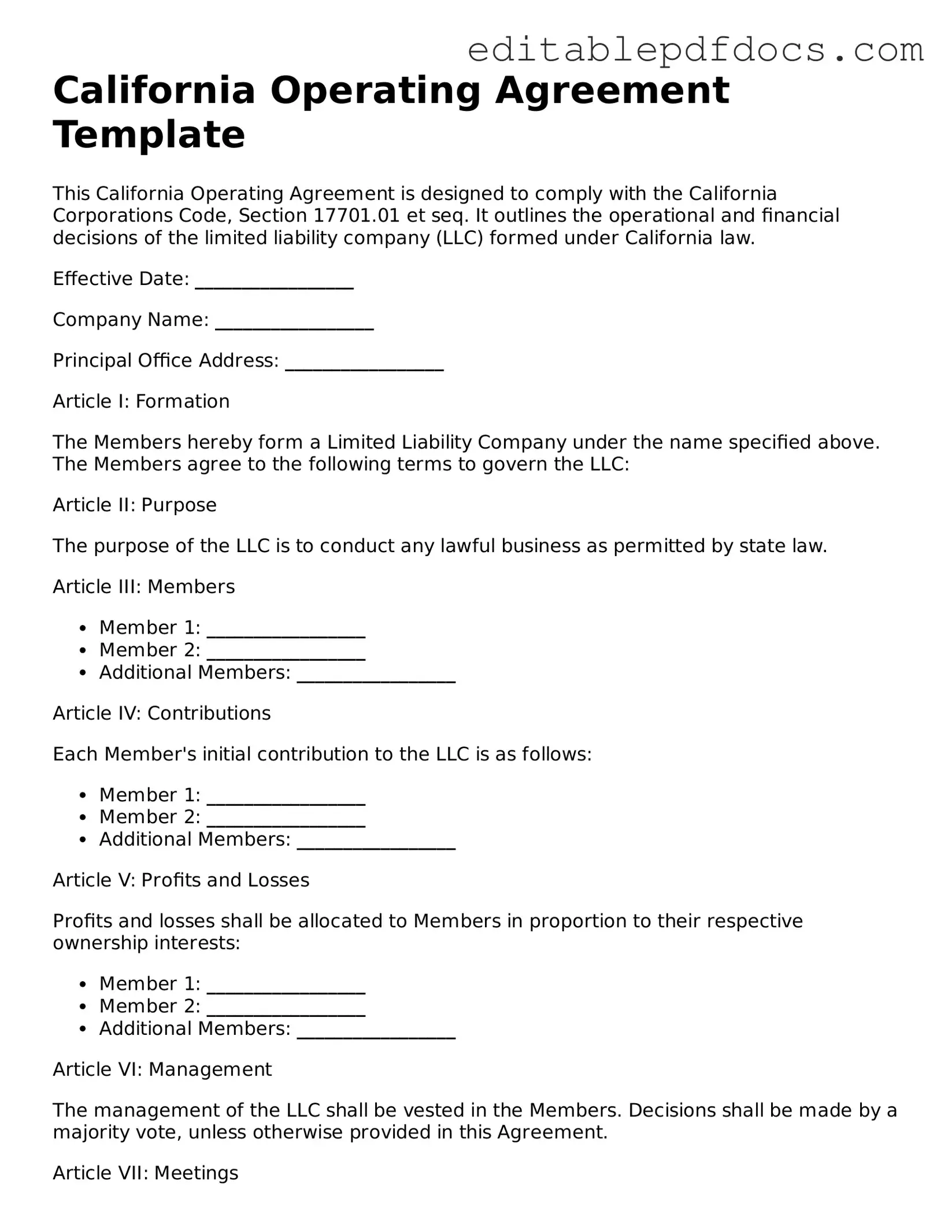When filling out the California Operating Agreement form, many individuals make common mistakes that can lead to complications down the line. One frequent error is not including all members of the LLC. It’s essential to list every member involved in the business. Omitting a member can create confusion about ownership and responsibilities.
Another mistake is failing to specify the management structure. Some people assume that the default management structure will apply, but this may not reflect the actual intentions of the members. Clearly stating whether the LLC is member-managed or manager-managed is crucial for smooth operations.
Many also overlook the importance of defining each member’s roles and responsibilities. Without this clarity, misunderstandings can arise, leading to conflicts among members. It’s vital to outline who is responsible for what tasks to ensure everyone is on the same page.
Inaccurate or incomplete information is a common pitfall. Whether it’s misspelling a member’s name or providing the wrong address, these small errors can have significant implications. Double-checking all entries can prevent future issues and ensure the document is valid.
Another mistake is neglecting to address the distribution of profits and losses. Members should agree on how profits and losses will be shared, and this should be clearly stated in the agreement. Failing to do so can lead to disagreements later on.
Some individuals forget to include provisions for adding new members or handling the departure of existing ones. Life changes, and businesses must adapt. Including these provisions can help manage transitions smoothly and maintain stability within the LLC.
Additionally, many people do not take the time to review the entire document before submitting it. Skimming through the agreement can lead to missed details or misunderstandings. Taking a moment to carefully read the agreement ensures that all members agree with its contents.
Finally, neglecting to update the Operating Agreement can be a significant oversight. As the business evolves, so too should the agreement. Regularly reviewing and updating the document ensures it remains relevant and accurately reflects the current state of the LLC.
